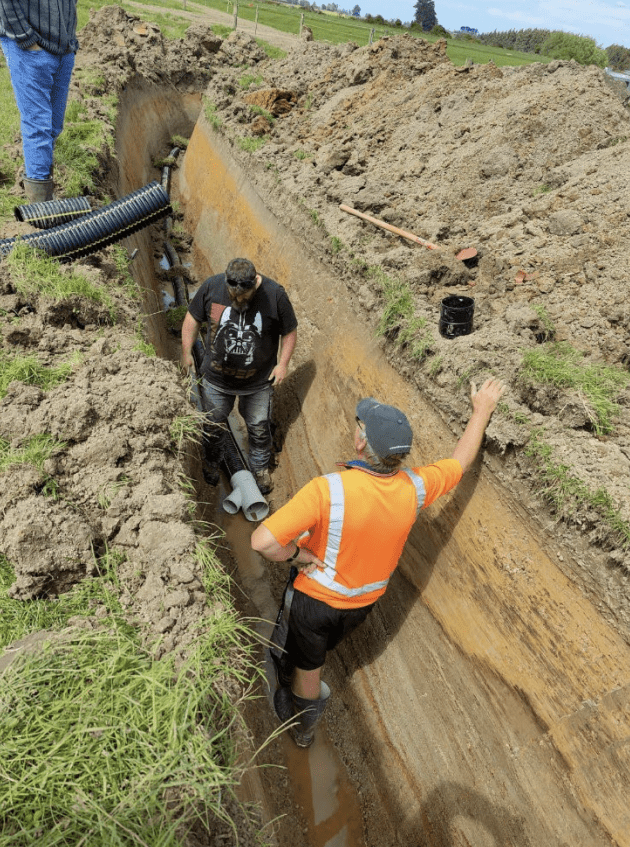Mating is off to a good start this week with good daily submission rates, helped along a bit by the first of our CIDR cows coming on. Our first cut of baleage was done this week with 14 pdks on the milking platform and a few on the support block conserved. Criteria for taking paddocks out of the round for conservation include:
o Pre-graze mass – above 3400 for the Std farmlets and 3100 for the LI farmlets, although several paddocks were taken out this week have had covers more than this.
o Previous grazing history i.e. residuals left too high so need resetting
o Pasture species and composition – mainly related to seedhead development and quality.
Key Decisions this week:
• Still targeting a 25-day round length
• The low-impact farmlets are moving into a period where the response from their spring application of nitrogen will be running out. With the next application not scheduled for early December, we need to be more conservative with decisions around conservation on these farmlets so we don’t mow ourselves into a feed deficit.
• Nitrogen will be applied to the Std farmlet paddocks that have been mowed for baleage at a rate of 30kgN/ha.
• For the FB farmlets, there is the ability to put in up to 1.5kgFB/day to ensure that intake remains at least 18kg and kale farmlets have inshed feeding
• This week there are still 50 lighter cows (BCS and visually assessed) that will remain on OAD.
• Mating is now underway and although it's only day 4, we are tracking ahead of last year's submission rates, with over 30% of the cows on the farm being put up already. The Std Kale cows are tracking well ahead of the daily targets for submission, with the remaining farmlets also all tracking higher than the daily target to reach 90%.
General Comments:
• The farm team are very impressed with how the Allflex collars are performing so far. Along with the Allflex collars on all cows we have 93 cows across the farmlets that have SmaXtec boli in their rumen for a project investigating heat stress. It is interesting tracking how the two technology approaches are performing relative to each other and tail paint/visual observations.
• Extra effluent hydrants have been installed this week to replace some of the old Alliance line extending the current area that receives effluent by 10 paddocks. This will increase the effluent area to approximately 115 ha.
• All calves (6 mobs) have now been shifted from the platform to the support block, one mob has been weaned and an additional three mobs will be weaned on Monday.
• This week we have had the digger contractors doing drainage work on the lower terrace. This work was prompted after 2 of our springer paddocks were not drying out so we couldn’t get in to prepare them for regrassing. On investigation, it was discovered that the outlet of a pipe servicing 7 paddocks had collapsed so the water was not getting into the drain
• Milk production for all farmlets is bouncing around a bit from paddock to paddock. To ensure that the production continues to hold constant, we will be making sure that pasture quality remains a top priority and that we have consistent feed allocation across the farmlets.
• Soil temperature this season is tracking 2-3 °C higher than last season and although we had a wetter August/September the cumulative rainfall between the two seasons since 1 May is similar between the seasons.
• All herds currently average BCS 4.5 however there is a higher proportion of cows in the Std farmlets below BCS 4.
• We have been working through all the soil and crop measurements from the Thriving Southland-funded crop establishment trial. As reported earlier we admit we made a number of mistakes in establishing the crops but learnt a lot about the preparation of the paddocks and timing of the establishment of our strip-till and direct drill fodder beet crops due to the issues we encountered. The issues primarily related to the complexity of the paddock layout, soil conditions and timing.
o Direct drill – soil conditions not ideal at the time of planting, too much dead trash after establishment, poor plant survival due to insect damage, pasture and weed competition following redrilling
o Strip till – soil conditions not ideal at the time of planting, too much trash after establishment, poor germination due to uneven seed depth, poor plant survival due to insect damage, significant competition from grass due to poor spray out and mistimed timed follow up sprays
o It is important to note that this was set up as a pilot demonstration and not a replicated experiment so the results will be confounded by the variation in yield that resulted between the established methods. In the table below we present a preliminary summary of results captured during the grazing period.
o Key observations so far for fodder beet
Yield within the direct drilled and strip-till fodder beet areas were lower and more variable than the conventionally established
Direct drill and strip-till fodder beet had a higher proportion of leaf at grazing
Pugging depth was lower in the direct drill area but the gumboot score and % pooling higher
o Key observations so far for kale
No differences in yield between the establishment methods but both were lower than that measured in other paddocks on the farm
No differences in pugging depth but a tendency for more surface pooling following direct drilling.
Click the link below to download our full weekly notes


